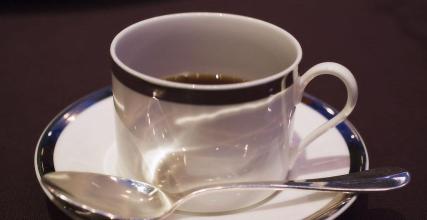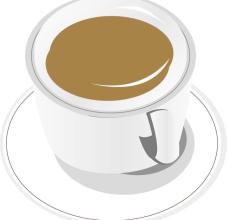Taste characteristics of Jamaican Coffee producing area Fine Coffee beans introduce Jamaican Coffee Brand
In 1670, Spain formally ceded Jamaica and other places to Britain according to the Treaty of Madrid. The British immediately used Jamaica as a base for their piracy. Before Loire Port was destroyed by an earthquake in 1692, it became the "capital" of Caribbean pirates. Since then, the British built Kingston City and gradually built it into the central city of Jamaica.
Bamboo Street, Jamaica
Bamboo Street, Jamaica
In the 150 years since 1692, Jamaica has become a world-famous producer of sugar, rum and coffee. [4]In order to maintain a large number of plantations, England established the Royal African Company in 1672.
After another major uprising in 1865, Britain declared Jamaica a Crown Colony in 1866. At the end of the 19th century, Jamaica's sugar industry declined and banana farming took its place. Kingston officially became the capital of Jamaica in 1872.
Jamaica Scenery
Jamaica Scenery
For decades after 1872, Jamaica's economy flourished, but social and cultural development was suppressed by the colonial authorities. During the Great Depression, in particular, there was a great deal of discontent among all classes in Jamaica with the declining social conditions. In 1938, workers in Jamaica revolted. Later, the colonial authorities were forced to grant some autonomy to the region. In 1944, Jamaica held its first general election.
In 1958, Jamaica joined the Federation of West Indies, but in 1961 voters rejected the Union Treaty, leading to Jamaica's withdrawal.[1]
Jamaica declared independence on August 6, 1962, and joined the Commonwealth after independence.
Andrew Holness, Jamaica's youngest ever Prime Minister, was sworn in October 23, 2011 in Kingston, Jamaica's capital, and everyone's eyes lit up when it came to Jamaica, which produces the best "Jamaica Blue Mountain coffee" in the world. We absolutely believe that Jamaica Blue Mountain Coffee is the best coffee, it has a good balance of acid, sugar, alcohol and bitterness, it tastes fragrant and tastes very smooth; however, it is too expensive, and although it is worth trying, there is no need to be fascinated by it. Because other selected coffees also have their own characteristics, and taste delicious, the price is reasonable, this is the good coffee in our life.
The earliest "Jamaica Blue Mountain" refers to the coffee produced by "Wallenford Farm" and "Silver Hill Farm", with the former having the best quality; today's "Jamaica Blue Mountain" refers to coffee beans grown in the Blue Mountain area (more than 1000 meters high) east of Kingston, the capital of Jamaica. Now the largest estate in the country, M.B.C. F is printed on its barrels, and its products are often found in Taiwan. Jamaica Blue Mountain is a very strict quality control, by the government "Coffee Industry Council" certification work.
Coffee beans generally grown at low altitudes and other regions can only be called "Jamaica mountain beans" or "Jamaica washed beans." Compared with Jamaica Blue Mountain, the flavor is much different. However, these producing areas are twice the area of the real Blue Mountain region and account for 75% of the country's production. Therefore, when buying Jamaica coffee, don't think that you have bought Blue Mountain coffee.
Because Jamaica Blue Mountain is too famous, therefore, there will be counterfeit Blue Mountain coffee on the market, or simply called "Blue Mountain Coffee," basically this is the comprehensive product prepared by the store itself, which may not have a real Jamaica Blue Mountain bean.
history editing
In 1717 King Louis XV of France ordered coffee to be grown in Jamaica for twenty years.
Blue Mountain Coffee
Blue Mountain Coffee (6 photos)
In the mid-19th century, Sir Nicholas Lawes, Governor General of Jamaica, imported Arabica seeds from Martinique and began planting them in St. Andrew. To this day, St. Andrew's is one of the top three growing regions for Blue Mountain coffee in Jamaica, along with Portland and St. Thomas. Within eight years, Jamaica exported more than 375 tons of pure coffee. Coffee production peaked in 1932, harvesting more than 15000 tons of coffee.
The Jamaica Coffee Industry Board was established by the Government of Jamaica in 1950 to establish quality standards for Jamaica coffee and oversee the implementation of quality standards to ensure the quality of Jamaica coffee. The Commission awards a special official seal to Jamaica's exports of green and roasted coffee and is the world's highest national coffee authority. Those that can represent the origin of Blue Mountain Coffee include Mavis Bank Coffee Factory (M.B.C. F), Blue Mountain Coffee Cooperative Factory (M.H.C.C.T.), Portland Blue Mountain Coffee Cooperative Plant (P.X.X.S.H.), Coffee Industry Association (Wallenford), Coffee Industry Association (St. John's Peak) and Blue (J.A.S.) 6 kinds of logo.

Important Notice :
前街咖啡 FrontStreet Coffee has moved to new addredd:
FrontStreet Coffee Address: 315,Donghua East Road,GuangZhou
Tel:020 38364473
- Prev

Panamanian Kasha boutique coffee bean flavor and taste the characteristics of the manor area introduce the varieties of Panamanian coffee
The Panamanian isthmus was originally inhabited by Indian settlements such as Chibucha and the Caribbean. In 1501, Panama was colonized by Spain and belonged to the Governor of New Granada. [5] in 1821, Panama became independent and became part of the Republic of Greater Columbia. [5] in 1830, after the dissolution of the Republic of Great Columbia, it became a member of the Republic of New Granada (later known as Colombia).
- Next

Ethiopian fine coffee beans flavor taste Manor production characteristics Variety brand introduction
In February 1977, Lieutenant Colonel Mengistu Haile Mariam launched a military coup and served as Chairman of the Provisional Military Administrative Council and Head of State. In 1979, the Organization Committee of the Ethiopian Working People's Party, dominated by military personnel, was established to implement a one-party system. In 1984, the Ethiopian Workers 'Party was formed on the model of the Communist Party of the Soviet Union. Mengistu, September 1987
Related
- Detailed explanation of Jadeite planting Land in Panamanian Jadeite Manor introduction to the grading system of Jadeite competitive bidding, Red bid, Green bid and Rose Summer
- Story of Coffee planting in Brenka region of Costa Rica Stonehenge Manor anaerobic heavy honey treatment of flavor mouth
- What's on the barrel of Blue Mountain Coffee beans?
- Can American coffee also pull flowers? How to use hot American style to pull out a good-looking pattern?
- Can you make a cold extract with coffee beans? What is the right proportion for cold-extracted coffee formula?
- Indonesian PWN Gold Mandrine Coffee Origin Features Flavor How to Chong? Mandolin coffee is American.
- A brief introduction to the flavor characteristics of Brazilian yellow bourbon coffee beans
- What is the effect of different water quality on the flavor of cold-extracted coffee? What kind of water is best for brewing coffee?
- Why do you think of Rose Summer whenever you mention Panamanian coffee?
- Introduction to the characteristics of authentic blue mountain coffee bean producing areas? What is the CIB Coffee Authority in Jamaica?

